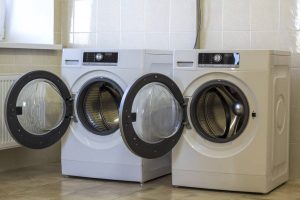Dryers are an essential part of life these days. They save time, energy, and money when it comes to drying clothes. But electric dryers need a little extra attention from time to time, so they don’t break down prematurely or cause other problems in the household. This blog post offers four tips for electric dryer maintenance that will help your electric dryer run smoothly and efficiently while saving you money on service calls!
Ascertain that the installation is done correctly
Make sure your dryer is professionally fitted and serviced. Check your handbook to see if your plugs will fit in your electrical outlet. If you have a gas dryer, have it checked by a professional to ensure that the gas line and connection are in good working order and that there are no leaks.
Remove the lint filter and clean it
Before drying each load of clothes, make sure the lint filter is clean. Consider trying a new item that produces a lot of lint for half a cycle and then pausing to clean out the lint filter before continuing to dry the item, such as a bath towel or bath mat. Check the drum of the dryer for lint collection on a regular basis.
Failure to clear the dryer of dust, fiber, and lint is the major cause of clothes dryer fires. Lint is very flammable and can limit airflow in clothes dryers, providing a fire hazard.
Examine the dryer vent
The dryer vent is situated on the exterior of your home. While garments are drying, check to see if the air is coming out of the vent on a regular basis. Turn off the dryer and inspect the vent for blockage if no air is flowing out of it. Vents can be blocked by accumulated lint, a bird’s nest, or even tiny animals. Install a dryer vent seal to ensure that the vent is closed while the dryer is not in use.
Examine the dryer vent
The dryer vent is situated on the exterior of your home. While garments are drying, check to see if the air is coming out of the vent on a regular basis. Turn off the dryer and inspect the vent for blockage if no air is flowing out of it. Vents can be blocked by accumulated lint, a bird’s nest, or even tiny animals. Install a dryer vent seal to ensure that the vent is closed while the dryer is not in use.
Examine the exhaust vent
Check for lint or debris in the duct that travels from the rear of your dryer to your wall and then outside to your dryer vent. If the duct is clogged, you may need to remove it to clean it out. Before making any alterations to your dryer’s exhaust duct, consult a professional.


